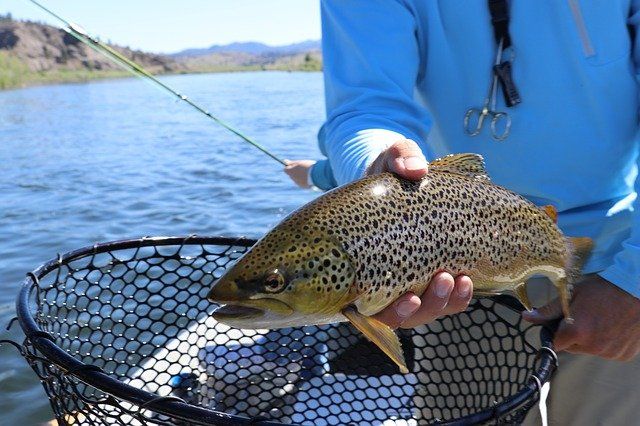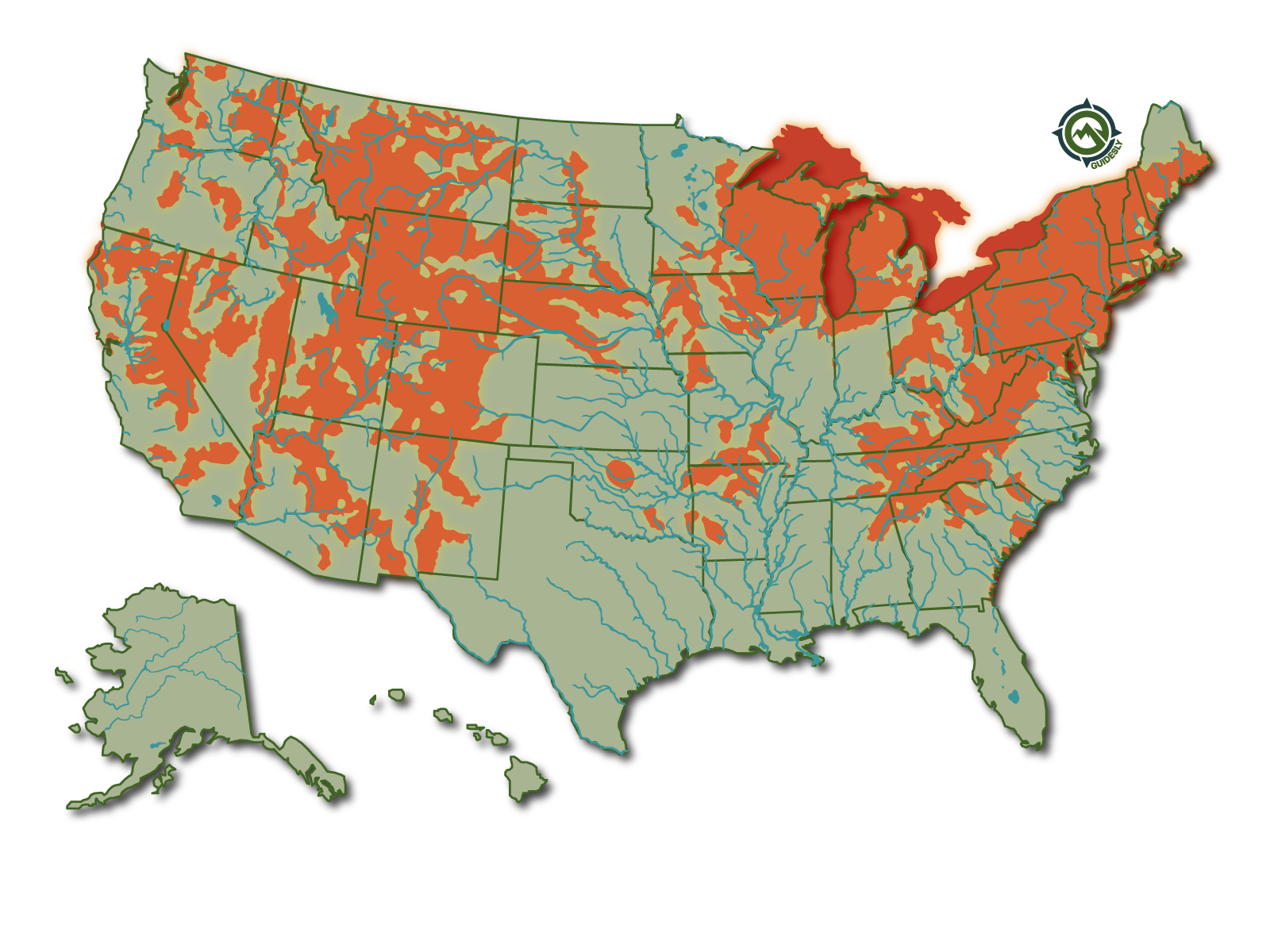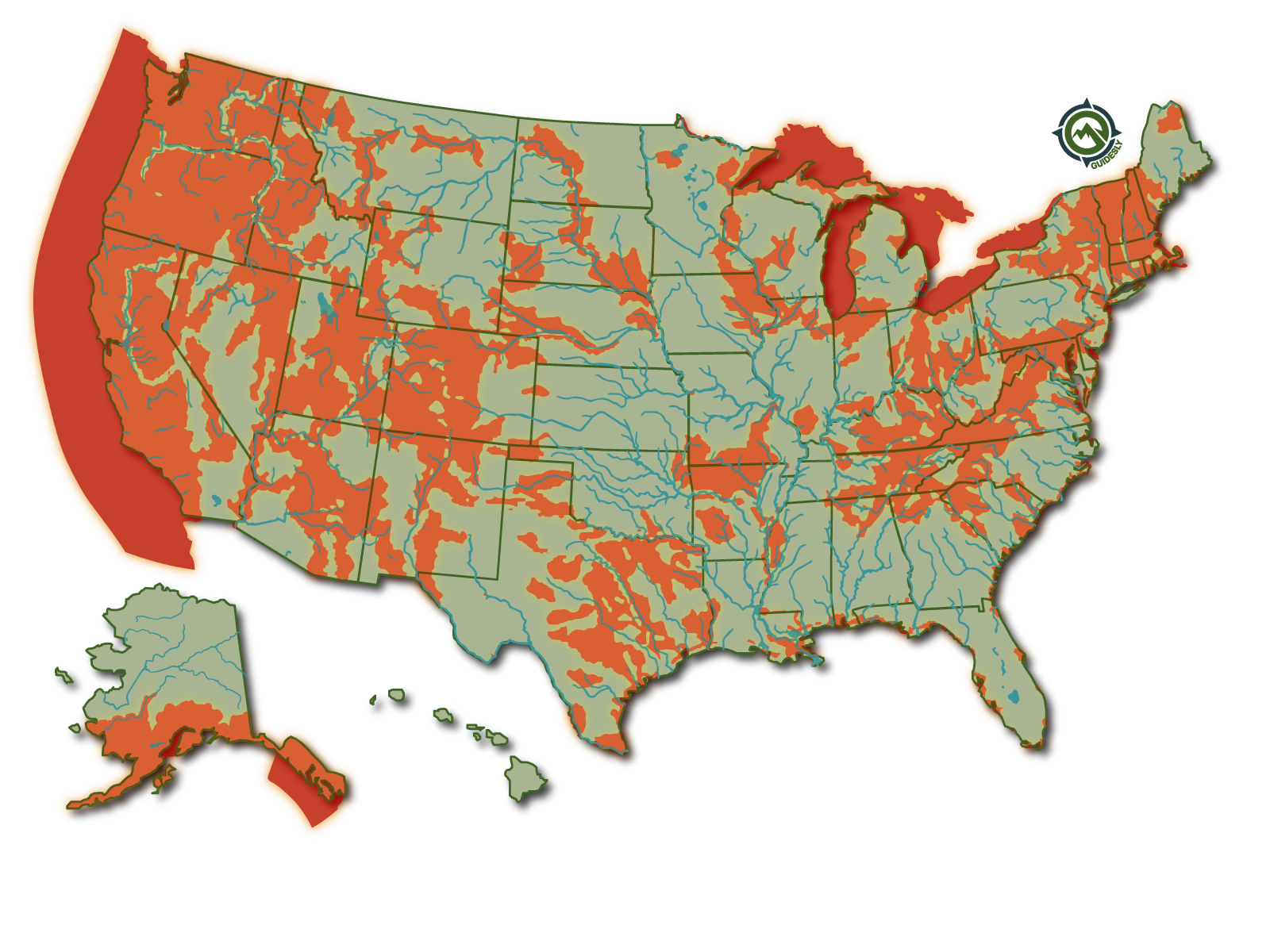Fall Steelhead Fishing | Western NY's Best Rivers
- Published Date: October 10, 2025
- Fishing
- Chautauqua Lake
- $300 - $400 price range
Summary
%2F%2Fusers%2F654d630e-6731-435d-8019-e48de6260c6c%2Fratecard%2F545771822_122172691736516879_1918639412188608772_n-mghkplvl.jpg&w=1200&q=75)
Trout on the Line


Fall Steelhead Run: Western NY's Hidden Gem
Get ready for an epic day on the water with our Fall Steelhead Run fishing charter in Western New York. We're talking prime-time action for Brown Trout and Steelhead in some of the best waters this side of the Great Lakes. Whether you're a seasoned angler or just getting your feet wet, our 4-hour trips are the perfect way to experience the thrill of fall fishing in WNY. We'll hit the sweet spots on local rivers, Lake Erie tribs, and even do some ice fishing on Chautauqua Lake when the conditions are right. It's just you (or you and a buddy) and our expert guide, so you'll get plenty of one-on-one time to hone your skills and land that trophy fish.
What to Expect on the Water
We kick off bright and early at 7:00 AM, giving you the best shot at catching fish when they're most active. For $300, you'll get a full 4 hours of guided fishing with all the gear you need - rods, reels, and tackle included. If we're chasing steelhead, you'll want to bring your own waders and boots to keep dry while we wade the rivers. For ice fishing trips, we've got you covered with all the specialized gear. Just remember to grab your NYS fishing license before you show up. Pack some grub, drinks, and layer up with weather-appropriate clothing. Don't forget those polarized shades - they're not just for looking cool, they'll help you spot fish in the water.
Techniques That Land Lunkers
We're not just casting and hoping here. Our guides know these waters like the back of their hand and they'll show you the tried-and-true techniques for hooking into some serious fish. For steelhead, we might be drift fishing with egg sacs or swinging flies, depending on the conditions. When we're after browns, we could be tossing spoons or working streamers. If we're ice fishing, you'll learn the finesse of jigging through the hard water. We adjust our tactics based on what the fish are doing, so you'll always be using the most effective methods. It's all about reading the water, understanding fish behavior, and presenting your bait or lure just right - skills you'll pick up from our seasoned guides.
Species You'll Want to Hook
Steelhead Trout are the stars of the show during our fall runs. These chrome-bright rockets can tip the scales at 10-15 pounds and fight like they're twice that size. They're ocean-going rainbow trout that return to the rivers to spawn, and hooking into one is like tying into a freight train. They'll test your gear and your skills with blistering runs and acrobatic leaps. The best time to target these silver bullets is from late September through November when the water temperatures start to drop and the fish move into the rivers en masse.
Brown Trout are the other heavy hitters on our fall menu. These bruisers are often overlooked by anglers focused on steelhead, but make no mistake - they're worthy adversaries in their own right. Fall-run browns in Western New York can reach impressive sizes, with fish in the 5-10 pound range not uncommon. They're known for their cunning and can be more challenging to fool than their steelhead cousins. Browns prefer slower, deeper pools and undercut banks. When hooked, they often dive deep and use the current to their advantage, making for an exciting battle. The prime time for targeting these spotted beauties is from mid-October through December.
Why Anglers Keep Coming Back
There's something special about fall fishing in Western New York that keeps folks coming back year after year. Maybe it's the crisp air and the colorful foliage that sets the stage for an unforgettable day on the water. Or perhaps it's the heart-pounding excitement of watching a steelhead slash at your offering before tearing off downstream. Our guests often tell us it's the personalized attention from our guides that makes the difference. With just 1-2 anglers per trip, you're getting a tailored experience that caters to your skill level and interests. Plus, the chance to fish multiple types of water - from rushing rivers to the vast expanse of Lake Erie and its tributaries - means every trip can offer a new adventure.
Time to Book Your Spot
Listen, the fall steelhead run isn't going to wait for you to make up your mind. These trips fill up fast, and for good reason. You're getting a crack at some of the best freshwater fishing the Northeast has to offer, guided by local experts who eat, sleep, and breathe this stuff. Whether you're looking to check "land a steelhead" off your bucket list or you're after that personal best brown trout, we've got the know-how to make it happen. Don't let another season slip by - grab your spot now and get ready for a day on the water you'll be talking about all winter long. Give us a call or hit that "Book Now" button. The fish are waiting, and so are we. Let's make some memories on the water!
Learn more about the species
Brown Trout
Brown Trout (Salmo Trutta) Description
Brown Trout are medium-sized premier cold-water game and sport fish. It has been introduced in suitable environments globally and is considered the backbone of many fisheries. These fish have brown or golden-brown backs and a yellowish or white belly. The back and sides are covered with black spots. Head and tail are sometimes spotted. There is a small reddish or orange adipose fin near the tail. Brown trout can be distinguished from similar salmon by their vomerine teeth.
Brown trout resembles Brook trout, Chinook salmon, Coho salmon, and Rainbow trout.
Brown Trout Size and Weight
The average size for this fish is 8-24 inches but can grow up to 39 inches depending on the habitat. They can weigh from 1 – 9.5 pounds.
When were Brown Trout Introduced in the United States?

Brown trout, a native of Europe and Asia, was first introduced to the United States in 1883. The species was brought to Michigan by Fred Mather, a fish enthusiast who believed brown trout would be an excellent addition to American waters. The introduction of brown trout was met with great excitement by anglers across the country, as this species is known for its fighting ability and delicious taste.
Since its introduction over a century ago, brown trout has become one of the most popular game fish in the United States. Today, it can be found in almost every state and is especially abundant in western rivers and streams. One of the reasons for its success is its adaptability - brown trout can thrive in cold and warm water environments.
To keep up with the demand from anglers, many states have implemented stocking programs to increase brown trout populations.
Interesting Facts
The Brown Trout live for 12 years but can have an extended life span of up to 18 or 20 years.
Brown trout can be found on almost every continent except Antarctica and many can be found living in the ocean.
They are stocked in 45 states as it's a popular game fish. They are self-sustaining in 34 states.
The Brown Trout is a Guidesly employee favorite to catch on a run!
Where do Brown Trout Live in the United States?

Brown Trout prefers to live in covers and cool, clear, and calm waters. A temperature of 54°F to 65°F is ideal for these fishes but can survive up to 75°F. Sea trout travel to brackish or ocean waters and return to freshwater for spawning. Found in small streams, large rivers, and any trout stream with the right water temperature, aquatic insects, and clean water. This species is usually restricted to freshwater, though a few migrate to the sea between spawnings.
Widely distributed, the Brown Trout can be found throughout 45 states and Canada.
Spawning
The spawning season for these fish starts in fall and early winter. River trout look for a head riffle or a freshwater stream to spawn. The site is dug by the females, where the eggs are laid and covered with gravel. Hatching occurs in spring.
Diet
Brown trout consume aquatic insects, salamanders, frogs, worms, crustacean mollusks, and other fish. In the sea, they eat alewives and other small fish.
Are Brown Trout Good to Eat?
Many people enjoy catching brown trout for sport, others wonder if it's good to eat. The answer is yes, brown trout can be a delicious and healthy addition to your diet.
The taste of brown trout depends on various factors, such as the quality of the water they inhabit, their diet, and how they are cooked. Generally speaking, brown trout has a mild flavor that is slightly sweet with a firm texture. It's often compared to rainbow trout or salmon but with a milder taste.
To cook brown trout, you can grill it with some lemon juice and herbs for added flavor. Pan-frying or baking are also great options that allow the natural flavors of the fish to shine through. Just make sure not to overcook it, as this can result in dry and tough meat.
Fishing Techniques - How to Catch Brown Trout
During the fall season, Brown Trout feed aggressively at night. They can be found in deep pools, overgrown vegetation, or hiding near rocks. Many anglers recommend fishing for them near piers, while others only consider fly fishing in streams. For fly fishing, dry fly or crawfish imitation can be used. A fly rod of 9 ft. length and 5 weight will wield for excellent results. They can use a line of 4-6 weight.
On the Great Lakes, trolling is an ideal option, or small spinners or baits can be used under a floater. Popular baits and lures used are streamers, woolly bugger, pheasant tail nymph, crayfish, and green caddis.

Steelhead Trout
Steelhead (Oncorhynchus mykiss) Fish Description
Steelhead (often called steelhead trout) is an anadromous (sea-run) form of the coastal rainbow trout that typically returns to freshwater to spawn after living two to three years in the ocean. Steelhead and Rainbow Trout are actually the same species, but they have different lifestyles. Steelhead spends part of their lives in the sea before going to rivers to breed—while rainbow trout spend their lives entirely in freshwater. Because of this, rainbow trout and steelhead are different in appearance, most noticeably in size and color. Rainbow trout derive their name from their beautiful, multi-hued coloration. Their bodies are blue, green, or yellowish, shading to silvery-white on the underside, with a horizontal pink-red stripe running from the gills to the tail and black spots along their backs. Steelhead is generally more streamlined in shape and silvery or brassy in color as adults, with black spots on their backs earning them their name. Steelhead has a streamlined body. They have black spots on the back and a pinkish-red stripe is present between the tail and the gills. Unlike rainbow trout, its body is more brassy and silvery in color. The anal fins contain 10 -12 rays.
Steelhead Trout Habitat and Distribution
Steelhead trout come and occupy freshwater lakes and streams during their lives. As a protective cover, Steelhead trout use wood, boulders, and vegetation. For spawning, Steelhead trout returns to freshwater bodies for a small period and spends most of their life in sea or estuaries.

Oncorhynchus mykiss is an excellent game fish in northern America.it native to the west of Rockies. But now steelhead trout is introduced in the majority of states. It is also present on all continents. The only place that has no steelhead trout is Antarctica.
Steelhead Trout Weight and Length
The average length of Steelhead trout is 24 inches but there are reports of steelhead trout reaching 45 inches. 55 pounds is the maximum weight that is reported for steelhead trout.
Steelhead trout Interesting facts
- The life expectancy is 11 years.
- Steelhead trout spawn multiple times.
• They are migratory fish.
• Rainbow trout lives all its life in freshwater but steelhead trout spend life in the sea and only come to rivers to breed • Due to time spent in the marine environment, they develop a lot of black spots on the body.
Steelhead Trout Diet
They can eat anything like eggs, crustaceans, mollusks, small fish, and insects in adult age and when they are young they feed on zooplankton.
Steelhead Trout Best Fishing Techniques
The best techniques for this fish are drifting, plunking, back trolling, and fly fishing. For fly fishing, both double and single-handed rods can be equally effective. They can be helpful to drift a nymph rig or swing a fly in the water. Spey rods and switch rods are very popular for fly fishing. The handiest Spey rod is a 13.5-foot 7-weight rod. Steelhead fly fishing is challenging but the reward is a tremendous fight.
Steelhead Trout Baits and Lure
For wet swing, it is better to use number 6-number 8 flies that are tied thinly such as Golden Demon, Skunk, Brad’s Brat, Silver Hilton, Max Canyon, Surgeon General, Purple Peril, and Skykomish Sunrise. You can use a bomber as a dry fly.
Steelhead Trout Migration and Spawning
They show migratory behavior as they spent the majority of their adult years in the sea. They come to freshwater for spawning and then return. On the gravel of freshwater bodies such as tributaries, steelhead trout female lay eggs which are fertilized by the male. They can lay 9000 eggs at a time but it depends on the female steelhead trout size.
Steelhead Trout Season
The best time of year for catching starts in mid-fall and ends in spring. ## The Trout Family Trout are members of the family Salmonidae, order Salmoniformes. The native trout family is closely related to salmon. A top fly fishing family of fish that are both tremendous game fish and tasty eating fish. Found in small streams, large rivers, and any trout stream with the right water temperature, aquatic insects, and clean water. The trout species is usually restricted to freshwater, though a few types migrate to the sea between spawnings. Members of the trout species include Rainbow Trout, Brown Trout, Brook Trout, Lake Trout, Steelhead Trout, Bull Trout, Cutthroat Trout, Apache Trout and several other smaller species.

%2Ffit-in%2F250x250%2Fguide_websites%2F22125%2Fimages%2F1744039608798untitleddesign24.png&w=1200&q=100)
%2Fusers%2F654d630e-6731-435d-8019-e48de6260c6c%2Fimages%2Fanglers-fishing-new-york-3063.jpg&w=768&q=75)
%2Fusers%2F654d630e-6731-435d-8019-e48de6260c6c%2Fimages%2Fsuccessful-fishing-mayville-3128.jpg&w=768&q=75)
%2Fusers%2F654d630e-6731-435d-8019-e48de6260c6c%2Fimages%2Fcoho-salmon-mayville-fishing-3206.jpg&w=768&q=75)
%2Fusers%2F654d630e-6731-435d-8019-e48de6260c6c%2Fimages%2Fcoho-salmon-ny-fishing-3228.jpg&w=768&q=75)
%2Fusers%2F654d630e-6731-435d-8019-e48de6260c6c%2Fimages%2Fcoho-salmon-mayville-fishing-2744.jpg&w=768&q=75)
%2Fusers%2F654d630e-6731-435d-8019-e48de6260c6c%2Fimages%2Fsuccessful-fishing-mayville-2615.jpg&w=768&q=75)
%2Fusers%2F654d630e-6731-435d-8019-e48de6260c6c%2Fimages%2Ftrophy-rainbow-trout-ny-2672.jpg&w=768&q=75)
%2Fusers%2F654d630e-6731-435d-8019-e48de6260c6c%2Fimages%2Fcrappie-catch-new-york-2733.jpg&w=768&q=75)
%2Fusers%2F654d630e-6731-435d-8019-e48de6260c6c%2Fimages%2Ffishing-trip-mayville-2613.jpg&w=768&q=75)
%2Fusers%2F654d630e-6731-435d-8019-e48de6260c6c%2Fimages%2Ffishing-for-the-best-trout-3060.jpg&w=768&q=75)
